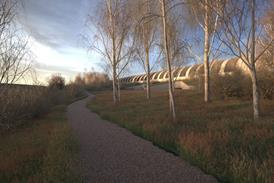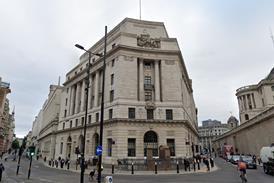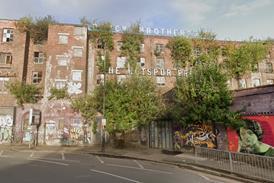If we are going to build less, does that mean we need to maintain more, asks Anna Beckett

I recently read an article about the oldest pub in the UK, or to be more specific, ten or so pubs that all try to claim this title. All of these buildings are several hundred years old, but most of them claim to be much older for a variety of reasons. One in particular claims to date back to 793, but also has a plaque inside the building that describes how it was “rebuilt after the flood of 1599”. Plus, according to Historic England, “pubs” in their current form didn’t exist until the 19th century, so it would have originally been an inn or a tavern. The claim that most of them are actually making is that there has been a drinking establishment on that site for the longest time. The building itself may have changed, and the name has probably changed too, but if you had been there in 793, you would have still been able to get a beer.
In most modern ways of thinking, we attach a certain amount of permanence to buildings. We consider them as part of the landscape almost in the same way as rivers or hills – particularly older buildings. The idea that a pub might be considered the “oldest pub in the UK” even though the building on that site has changed is completely at odds with that idea. And that got me thinking – if we’re going to consider it the same building, how much of it needs to remain unchanged? If we’re considering a project as a retrofit, how much of the original structure should remain in place?
If we’re doing a fit-out project, then the structure of the building and the external fabric remain unchanged – it’s quite clearly the same building. Up until a few years ago, a retrofit project would have only included minor structural modifications, such as infilling a lift shaft or adjusting an atrium. But in recent years, the idea of “deep retrofit”, in which significant structural modifications are made and, in some cases, part of the structure is demolished, has started to become more commonplace. But is it still “retrofit” and, more importantly, does it still make sense in terms of sustainability?
Retrofit won’t always be possible, and when it isn’t, we need to take a step back and consider what is really the most sustainable option
When it comes to the structure, we need to define what we’re measuring. Considering the building in terms of the volume of materials used to construct it makes sense in terms of both carbon and sustainability, but might not make sense in terms of our perception of “a building”. For most buildings, there is a huge amount of structure below the ground, buried in the foundations, that we never see. Out of sight, out of mind. In terms of carbon, this could be as much as 30% of the embodied carbon of a building. We should do everything we can to reuse foundations, but we wouldn’t consider a project that only reused foundations as either a retrofit project or as the same building. Clearly, we need to retain superstructure.
But how much of the superstructure? Half? More than half? And what if the modifications we need to make to retain part of the existing building actually result in higher carbon emissions than if we’d constructed something much more efficient? What about if we dismantle the materials that are already there and put them back together in a different configuration? It would be difficult to consider it the same building, but it might be the most sustainable way of using the resources available.
In the sustainability hierarchy, “do nothing” comes first, and it’s something we’re not very good at. We need to get better at assessing what we already have and finding ways to work with it. But we also need to make sure that we’re taking a holistic view of the way we’re treating a building. Retrofit won’t always be possible, and when it isn’t, we need to take a step back and consider what is really the most sustainable option for the site. If we have to demolish, then we need to prioritise material reuse, even if it’s more difficult than what we’re used to. It won’t be the same building, but it might be the most sustainable outcome. If we don’t, the sustainability claims we’re making might be just as questionable as the claim of the oldest pub in the UK.
Postscript
Anna Beckett is an associate director at Buro Happold
















No comments yet